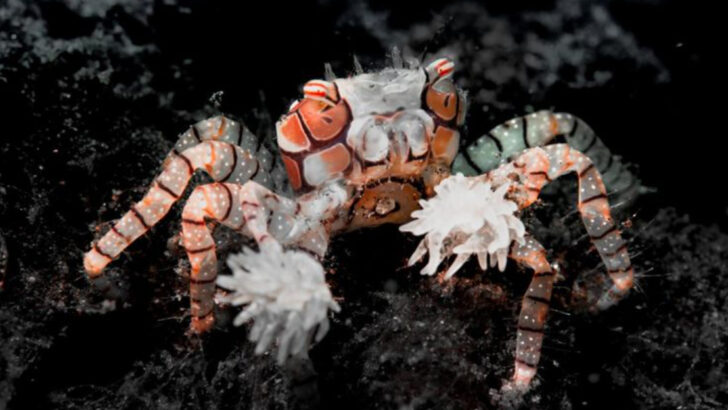The Pom Pom Crab, with its delightful appearance and intriguing behaviors, is a marine creature that fascinates both scientists and aquarists alike.
Known scientifically as Lybia edmondsoni, this tiny, vibrant crab is often recognized for its unique relationship with sea anemones.
In this article, we explore twelve captivating facts about the Pom Pom Crab, highlighting its symbiotic relationships, habitat, and charming characteristics that make it stand out in the underwater world.
The Pom Pom Pairing
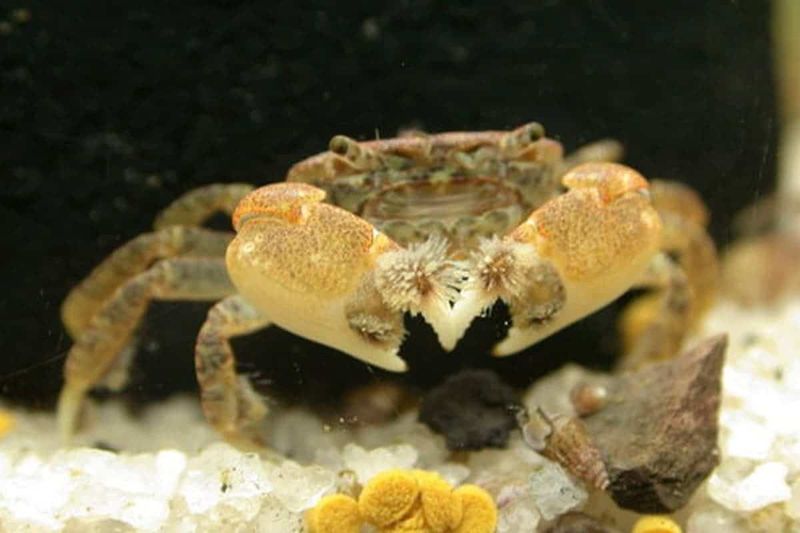
Pom Pom Crabs are renowned for their symbiotic relationship with sea anemones. These crabs hold anemones in their claws, resembling pom poms, hence their name.
The anemones provide protection with their stinging cells, and in return, the crabs offer mobility and access to food. This partnership is a beautiful example of nature’s balance. The sight of these crabs waving their anemone-adorned claws is both fascinating and adorable.
Such a unique pairing raises questions about how these creatures have evolved to cooperate so effectively.
Natural Habitat
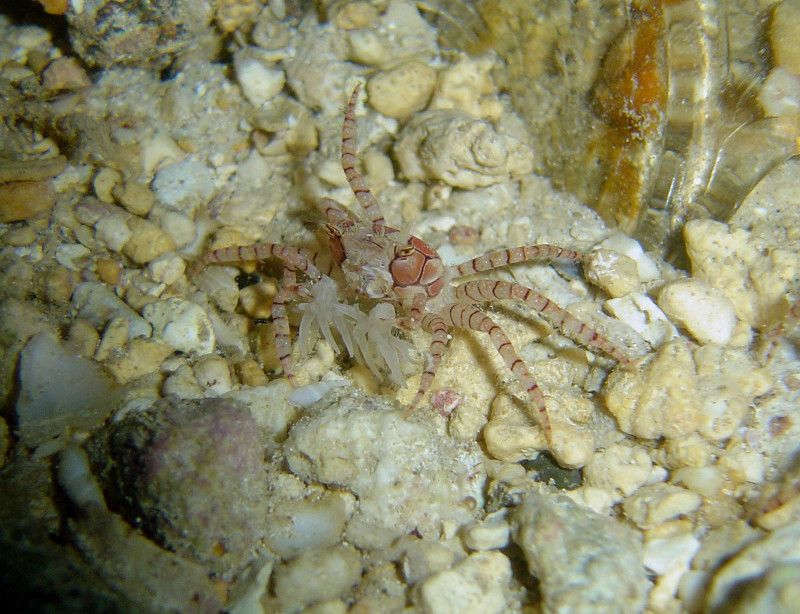
Found primarily in the tropical waters of the Indo-Pacific region, Pom Pom Crabs thrive in coral reef environments. These reefs offer abundant hiding spots and a rich source of food.
Despite their small size, Pom Pom Crabs are adept at navigating this complex habitat. Their presence in these vibrant ecosystems highlights their role in maintaining ecological balance.
Coral reefs, with their stunning biodiversity, provide an ideal backdrop for observing the intriguing behaviors of these tiny crabs.
Unique Defense Mechanism
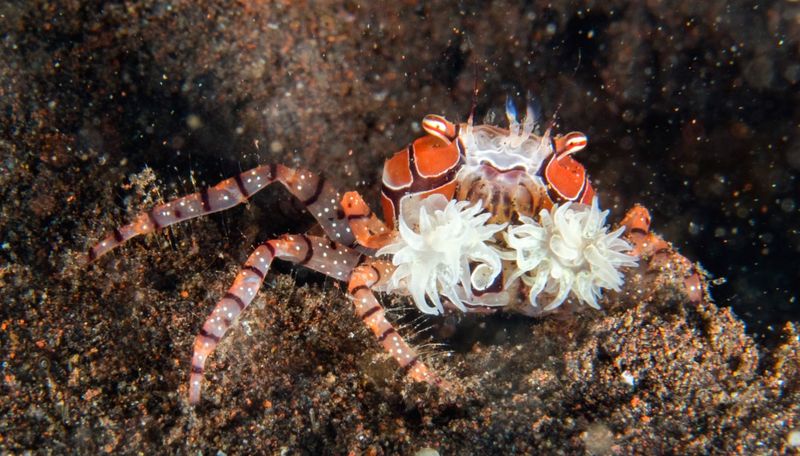
The Pom Pom Crab’s primary line of defense is its anemone partners. When threatened, these crabs use their anemones to ward off predators, a maneuver that is as effective as it is novel.
This defense mechanism underscores the innovative survival strategies employed by marine creatures. Their reliance on anemones demonstrates a specialized adaptation that is both remarkable and effective in the wild.
Observing this behavior provides insight into the complex interactions within marine ecosystems.
Miniature Appearance
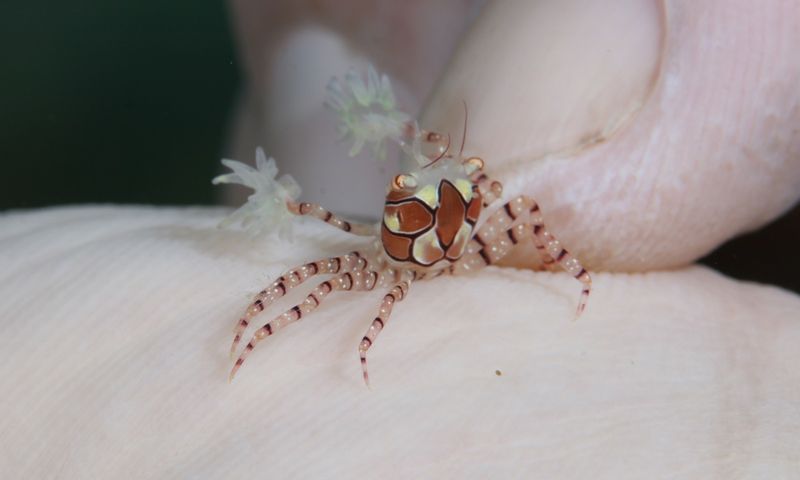
Measuring only about an inch across, Pom Pom Crabs are truly diminutive. Their small stature adds to their charm, making them a favorite among aquarists.
Despite their size, these crabs exhibit complex behaviors and social interactions. Their miniature appearance belies their robustness and adaptability in diverse marine environments.
Holding one in your hand reveals just how delicate yet resilient these creatures are, capturing the fascination of those who encounter them up close.
Colorful Exoskeleton
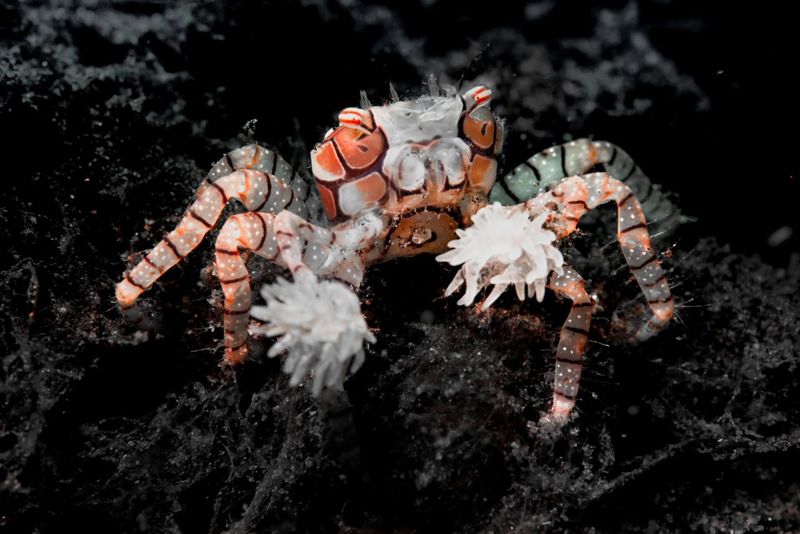
Adorned with a colorful exoskeleton, Pom Pom Crabs are visually striking. Their shells often feature intricate patterns and vibrant hues, ranging from orange to purple.
This coloration not only serves as camouflage against predators but also enhances their appeal. The vivid patterns are a testament to nature’s artistry, showcasing the diversity found within marine life.
Such vibrant colors can mesmerize anyone observing these crabs in their natural habitat or in aquariums, where they often become the star attraction.
Social Behavior
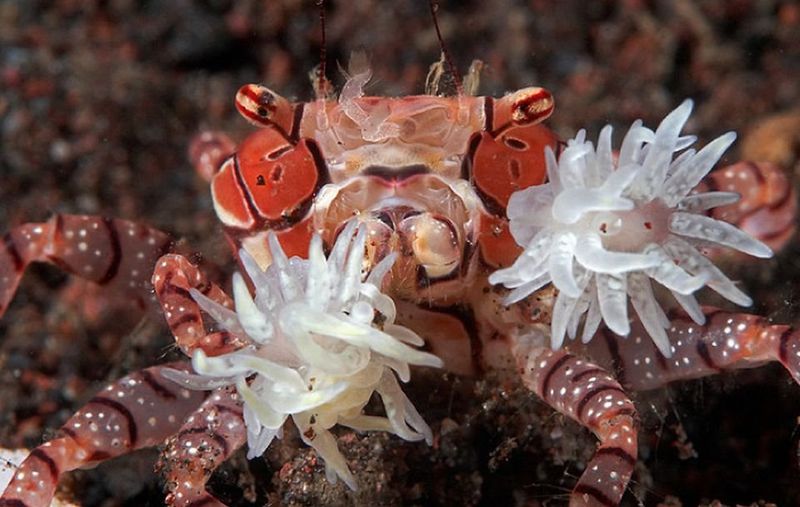
Pom Pom Crabs are known for their social nature, often engaging in interactions with other crabs and marine life. These interactions are vital for establishing territories and finding mates.
Their social behaviors offer a glimpse into the complex social structures that exist beneath the waves. By studying these interactions, scientists gain insights into the social dynamics of marine species.
This behavior not only highlights their adaptability but also their ability to thrive in community settings.
Breeding Habits
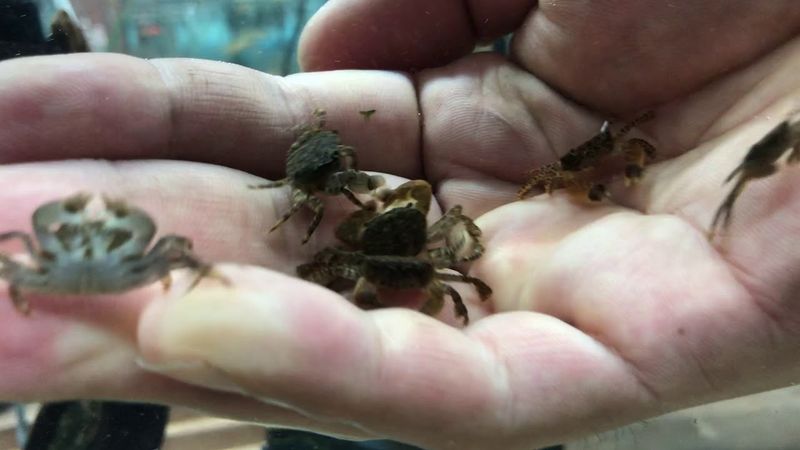
Breeding among Pom Pom Crabs involves fascinating rituals. Females carry fertilized eggs on their abdomens, a sight that showcases their nurturing instincts.
The eggs are carefully guarded until they hatch, demonstrating the crabs’ commitment to offspring survival. This breeding behavior is crucial for understanding the life cycle of these crabs. Observing this process provides valuable information about reproductive strategies in marine environments.
Such dedication to the next generation is both inspiring and essential for species continuation.
Feeding Techniques
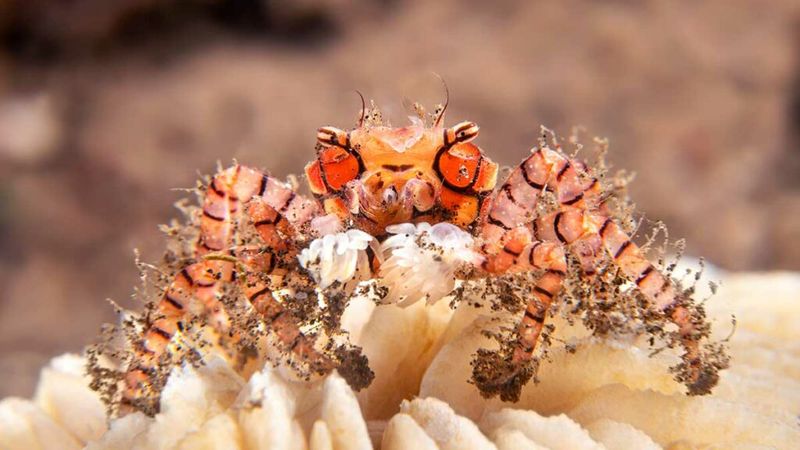
Pom Pom Crabs employ unique feeding techniques, using their anemone partners to capture plankton and detritus.
This symbiotic relationship aids in their survival, allowing efficient exploitation of available resources. Their feeding habits highlight the adaptability of marine organisms in diverse ecosystems. By observing these techniques, researchers can learn more about energy transfer within coral reefs.
The crabs’ ability to utilize anemones in feeding is a testament to their resourcefulness and ecological niche.
Adaptability
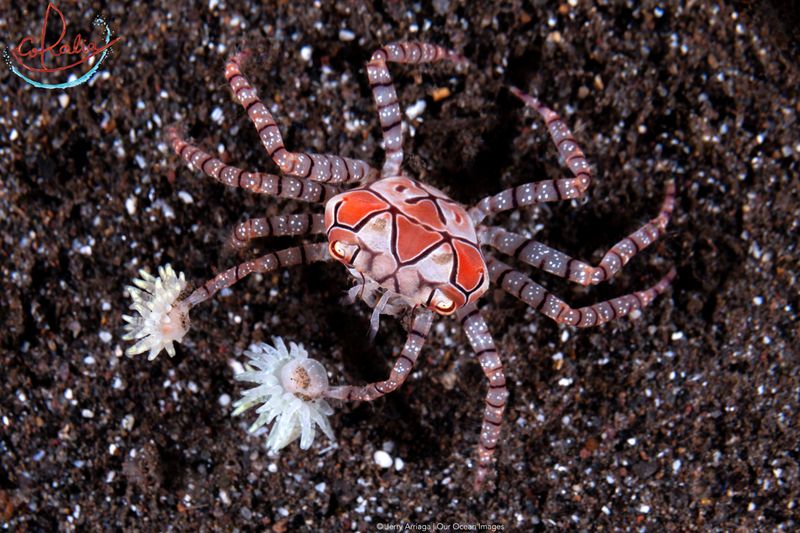
Despite environmental changes, Pom Pom Crabs exhibit remarkable adaptability. They can thrive in various marine settings, from coral reefs to rocky shores.
This adaptability is key to their survival in ever-changing habitats. Understanding their resilience helps scientists draw parallels with other marine species facing similar challenges.
Their ability to adjust to diverse environments serves as an inspiration for studying ecological adaptability and resilience in marine life.
Ecological Importance
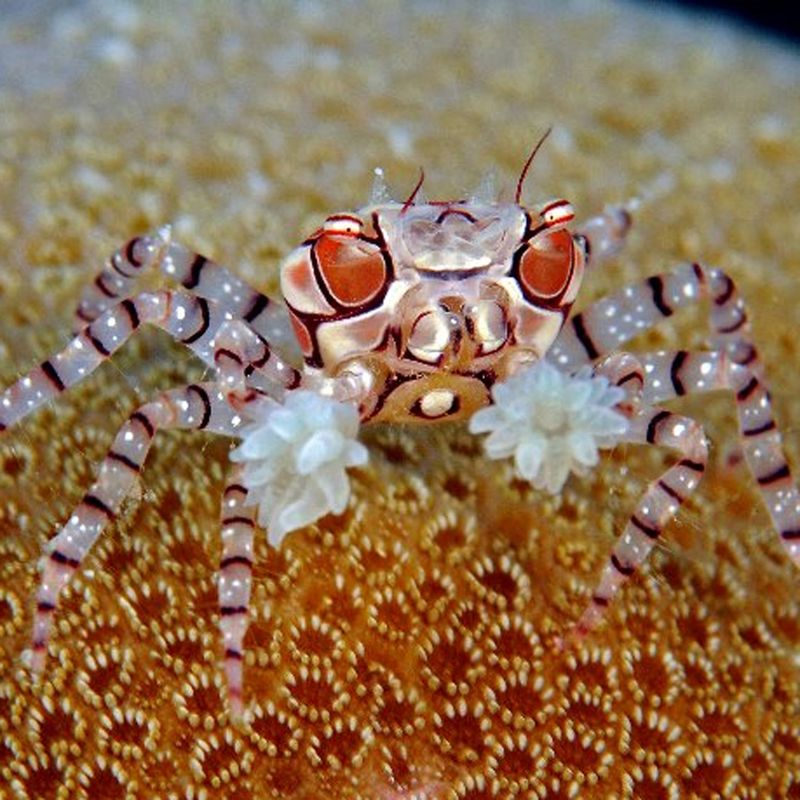
Pom Pom Crabs play a vital role in maintaining the health of marine ecosystems. By forming symbiotic relationships with anemones and participating in the food web, they contribute to ecological balance.
Their presence in coral reefs aids in nutrient cycling and habitat complexity. This ecological importance underscores the interconnectedness of marine life. Studying their role provides insights into preserving biodiversity and the intricate dynamics of underwater ecosystems.
Cultural Significance
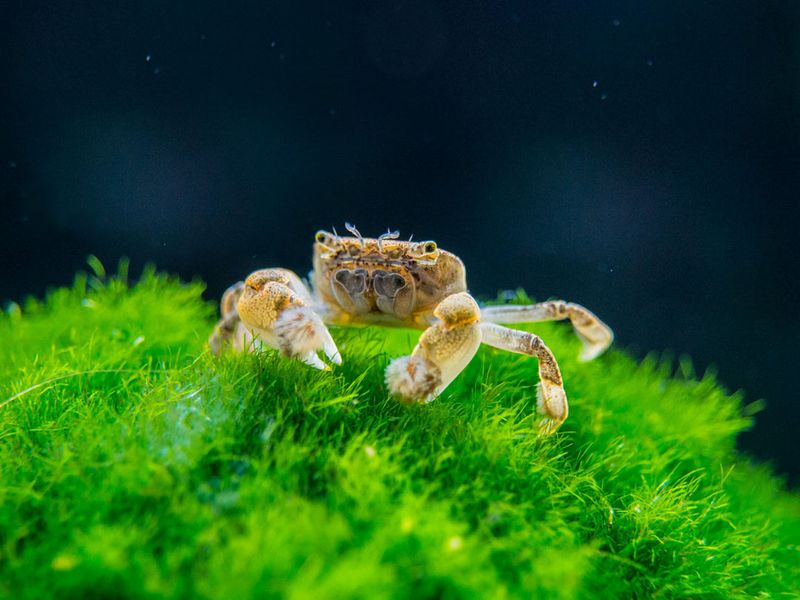
In some cultures, Pom Pom Crabs are celebrated for their unique appearance and behaviors. They often feature in art and folklore, symbolizing resilience and cooperation.
This cultural significance highlights the human connection to marine life. By incorporating these crabs into cultural narratives, people express admiration for their beauty and complexity.
Such depictions serve to raise awareness about marine conservation and the need to protect these fascinating creatures.
Conservation Status
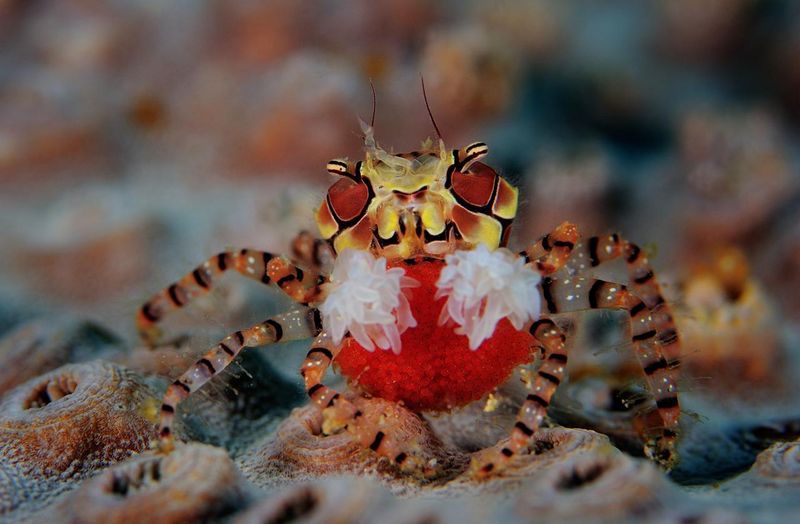
While not currently endangered, Pom Pom Crabs face threats from habitat loss and climate change. Conservation efforts aim to protect their natural environments and promote sustainable practices.
Understanding their status helps prioritize conservation actions and educate the public. Efforts to preserve these crabs ensure the continued health of marine ecosystems. Their conservation serves as a reminder of the delicate balance within nature and the importance of protecting all marine life.

